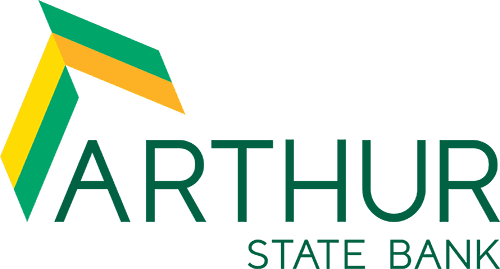As we’re all well aware, life is filled with uncertainty. And when unexpected — and costly — expenses arise, having a “rainy-day fund” at the ready can prevent a lot of financial headaches.
But while most Americans may recognize the importance of having an emergency fund, making the stockpiled savings a reality can be a serious challenge. In fact, according to a 2021 report from the U.S. Federal Reserve, nearly four in 10 American adults surveyed in November 2020 reported that they would be unable to fully cover a $400 expense with cash or its equivalent. (Among these consumers, the top option for paying off such a surprise cost would be to put the charge on a credit card and carry the balance.)
A quick emergency fund 411
Before getting started on their saving, many consumers may wonder “What is an emergency fund exactly?” and “How big should an emergency fund be?” The quick answer to the first of these questions is that an emergency fund is a sum of money that has been set aside to cover the financial surprises that life can bring — and help eliminate the stress that comes with being unable to cover such surprise bills. And regarding how large the stockpile of money should be, a common rule of thumb is to have enough savings on hand to cover three to six months’ worth of household expenses should your income be stopped or interrupted.
6 ways to start saving
Wondering just how to start building an emergency fund for yourself? By looking for opportunities to slowly and steadily put money away, you can create a more secure financial future for yourself and your family — and enjoy the peace of mind that comes with knowing that you have a financial safety net.
Consider these six effective ways to start setting money aside for a rainy day and to gradually build up your emergency fund over time:
- Create a budget — Creating a household budget that outlines the critical expenses (including bills, loan payments, etc.) you must cover each month and the income you have available to cover them is a good first step to take. By doing this, you can get a much better idea of how much you can afford to set aside each month. After tallying your total expenses and subtracting them from your monthly income, you’ll get a figure that shows how much discretionary income you have available each month. Use this number to set a monthly savings goal for yourself. (Of course, it won’t be realistic to try to save all of your discretionary income each month — so be sure to give yourself some wiggle room. But by setting a goal of saving half or a third of your discretionary income each month, you’ll greatly increase your likelihood of actually setting some funds aside.)
- … and trim the fat — Reviewing your monthly household expenses while creating a budget also offers a great opportunity to look for savings opportunities — and by seizing them, increase your monthly discretionary income. Could you save money by opting for streaming services instead of paying for cable television? On that note, are you currently paying for streaming services that you seldom use? What about splurges — could you cut the number of visits to the coffee shop you make each week by brewing your own coffee? And could you cut the number of meals you eat out each week by packing your lunch more often? Any regular expense that you can reduce marks an opportunity to put more money into your emergency fund each month.
- Make savings automatic — If you (like many Americans) have both a checking account and a savings account in place, having your bank link them can enable you to set up automatic cash transfers each month — which can be a great way to save money while avoiding the temptation to spend it. For example, by arranging an automatic transfer of a set amount of funds from your checking account to your savings account each payday (or shortly thereafter), you’ll be able to build up your savings without the transferred funds ever even appearing (or residing for long) in your checking account. And as the “out of sight, out of mind” saying implies, this can make it much easier to avoid being tempted to spend any of the transferred money.
- Keep the change — If you regularly use cash to make your everyday purchases, saving up the change from each of your purchase transactions can help you gradually build up your emergency fund without having to make substantial financial sacrifices. To facilitate this, designate a place in your home to store all of your loose change at the end of each day, such as in an empty jar or cup. Once the jar or cup fills up, bring it to your bank for deposit into your savings account. While the amount of daily savings generated will likely be small, over time the funds set aside can add up to significant amounts. And to take the tactic a step further, consider rounding each of your purchases up to the nearest multiple of $5 or $10 so that you’re also adding small bills to your loose change, which can help you bulk up your emergency fund even faster.
- Put away any windfalls — Most of us have unanticipated money land in our laps from time to time, such as when we receive a tax refund, an inheritance check or a holiday bonus from our employer. And when these windfalls occur, it can be tempting to treat ourselves to a spending splurge. But by setting aside at least a substantial portion of the “found” funds and putting it into savings, you can quickly grow the size of your rainy-day nest egg.
- Find ways to supplement your income — Another way to quickly build savings to bulk up an emergency fund is to take on a side job or to find ways to make money off of a hobby. Options here can include things such as teaching an exercise class on the weekends, doing yard work around the neighborhood, or selling arts and crafts at a local farmers market. And by putting the proceeds from such supplemental income directly into your emergency fund, you can build it up quickly.
Proudly serving South Carolina since 1933, Arthur State Bank offers accounts and services to meet a variety of financial needs. To help you achieve all your financial goals, the bank offers in-person service as well as a range of convenient digital solutions. To learn how Arthur State Bank can help you with banking needs ranging from checking and savings to retirement accounts, mortgages, other personal loans and more, visit arthurstatebank.com.






















